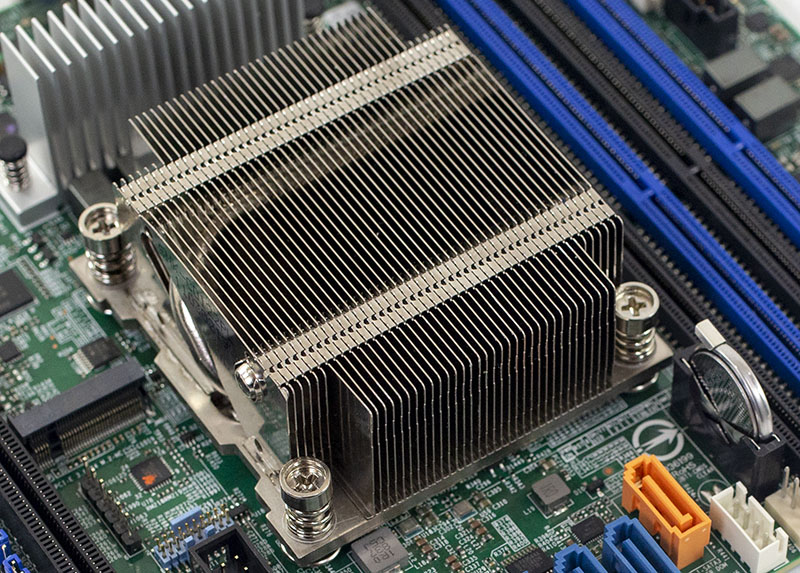Supermicro M11SDV-4CT-LN4F Power Consumption
We used our pair of Extech TrueRMS Power Analyzer 380803 units to take measurements at different points of the Supermicro M11SDV-4CT-LN4F use on 120V power in the embedded lab. Embedded platforms tend to spend more time at the edge in offices rather than in higher power data centers, hence why we do our testing at a lower voltage. Here are the figures:
- Power off BMC only: 4.4W
- OS Idle: 24.0W
- 100% Load: 53.8W
- Maximum Observed: 61.1W
These are solid results. The Supermicro M11SDV-4CT-LN4F performs well and at a lower power level than many of the Intel Xeon D-2100 performance competitive solutions. In the embedded market, low power is key.
Final Words
There is a segment of the market that wants to diversify from Intel for at least a portion of their portfolio. In the past, that meant going to an Arm server involving porting code. The Supermicro M11SDV-4CT-LN4F changes this paradigm. Most code can be run out-of-the-box on its AMD EPYC 3101 processor. When new security vulnerabilities like Foreshadow/ L1TF are found in an architecture well into its lifecycle, having another vendor that is or may not be vulnerable is important.

We still wish that Supermicro had found a way to add the AMD EPYC 3000 series quad 10GbE networking onboard. For a first generation AMD EPYC 3000 series platform we understand why the Supermicro M11SDV-4CT-LN4F uses a conservative yet feature rich 1GbE option. One could argue that there is little to no extra room on the motherboard to put 10GbE cages.
For those looking for a modern x86 embedded platform that is an alternative to Intel Xeon D and perhaps Intel Atom C3000, the Supermicro M11SDV-4CT-LN4F is a top choice. It has a solid set of features. It also shares many of the same I/O placements as Supermicro’s other embedded offerings making integration as alternatives to the company’s other Intel offerings as easy as changing the motherboard part. The platform has worked well for us during testing and the ability to get offerings above this and up to the 8-core/ 16-thread variants gives the AMD M11SDV line quite a bit of versatility.




Thanks for reviewing this motherboard. I actually have two of these motherboards running pfSense. They run great for my application.
If only it had two 10Gbit NIC:s, it would be a perfect pfSence board. My ISP offers a 1Gbit line, with an option to upgrade it to ~4Gbit line so I am looking something for that atm, but I guess my choices are either with Intel board or AMD with extra LAN card, which is bit sad. IMO Supermicro should have designed these board for a specific use case, and to be honest I cannot see which is a correct use case for this product. It has neither enough SATA / m.2 or expansion slots to be NAS board nor does it have fast enough NIC for Pfsense purposes. Kinda sad to see the missed opportunity for AMD fans. It is all around board which doesn’t do anything extraordinarily well which I feel would have been within reach if they did not try to satisfy everyone with a single product that has limited space.
Can you recommend a power supply unit that is of small form factor and has enough juice to power this board alone without any other peripherals?